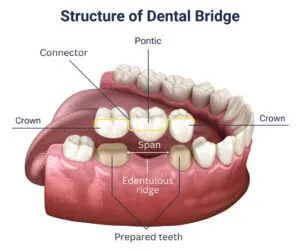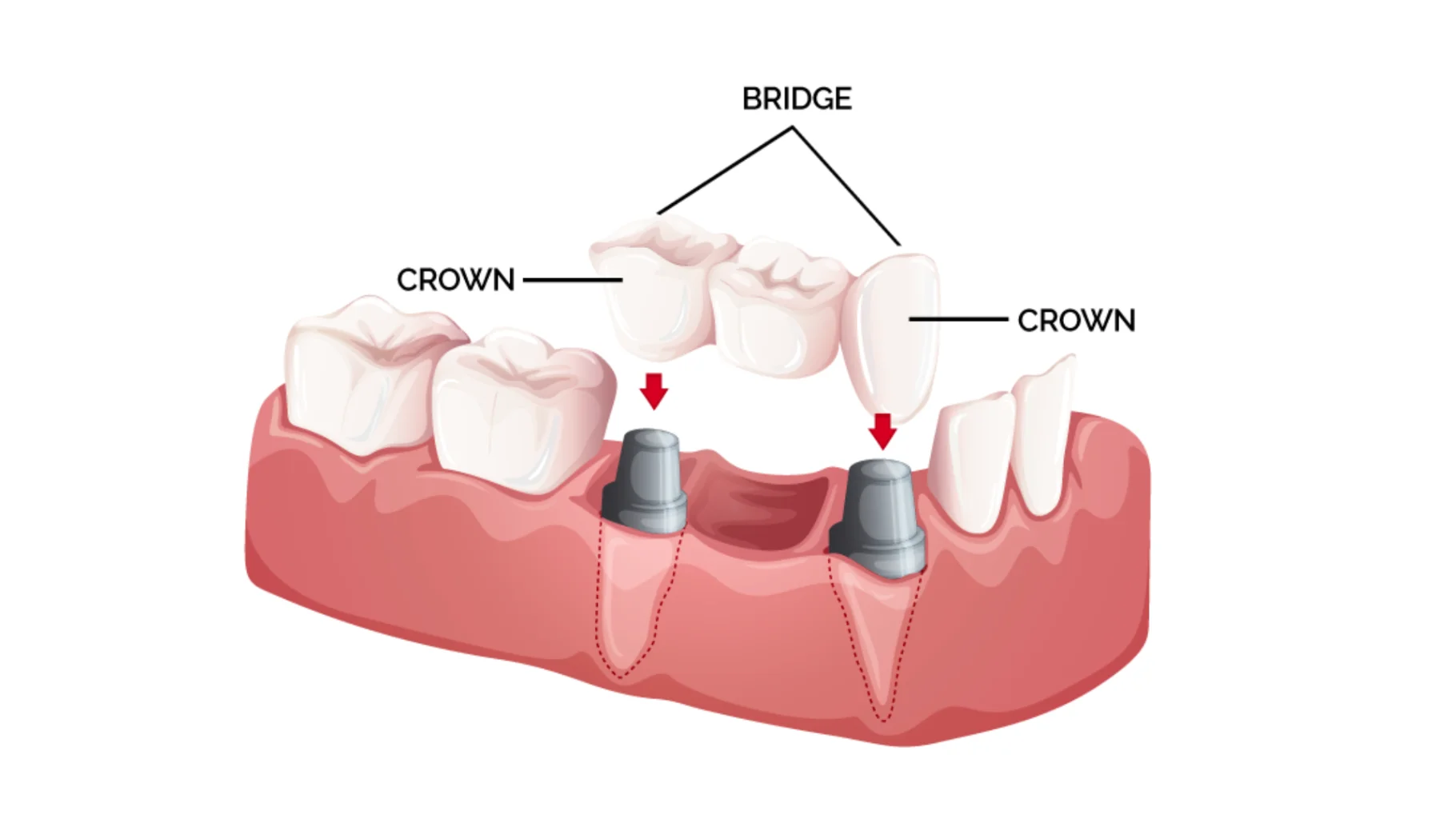Dental bridges are a tooth replacement option that can effectively fill the gap created by one or more missing teeth. They consist of artificial teeth, known as pontics, which are securely anchored to the adjacent natural teeth or dental implants. Dental bridges not only restore the appearance of a complete smile but also provide functional benefits by restoring the ability to bite and chew properly.

The process of getting a dental bridge typically involves multiple visits to the dentist. During the initial appointment, the adjacent teeth are prepared by removing a small amount of enamel to create space for the bridge. Then, impressions or 3D scans of the teeth are taken, which serve as a guide for creating a customized bridge that fits your mouth perfectly. In the meantime, a temporary bridge may be placed to protect the prepared teeth.
Once the permanent bridge is ready, it is carefully fitted and adjusted by the dentist to ensure a comfortable and natural fit. The bridge is then bonded or cemented into place, securing the artificial teeth in position. With proper care and regular dental check-ups, dental bridges can last for many years.
Dental bridges offer several advantages over the other option of implants and dentures:
- Non-surgical procedure
- Relatively quick procedure. Generally takes 3-4 appointments for about 5-10 days.
- Permanently fixed in the mouth.
The main disadvantages are:
- It relies on the health of the supporting teeth.
- It often requires preparation of the adjacent teeth
- The state of the existing adjacent teeth will play a large factor in whether a bridge is a suitable option for you.
It’s important to maintain good oral hygiene to ensure the longevity of your dental bridge. Regular brushing, flossing, and dental cleanings are crucial to keep the supporting teeth and gums healthy. Consulting with a dental professional will help determine if a dental bridge is the right solution for you, considering factors such as the number and location of missing teeth, the condition of adjacent teeth, and your overall dental health goals.


